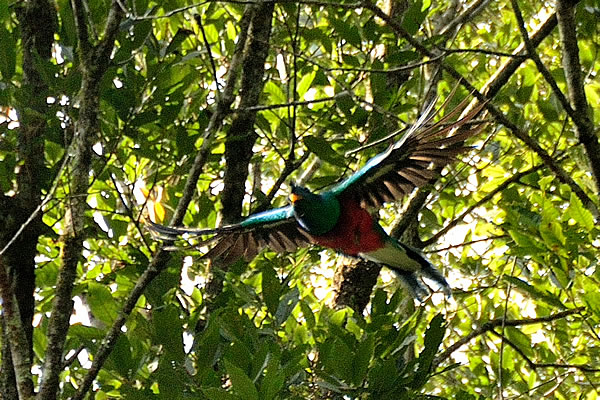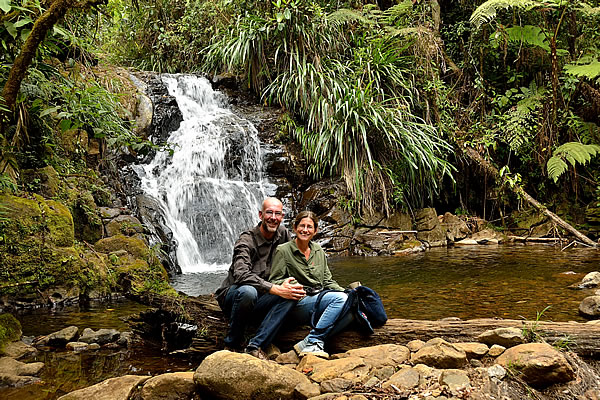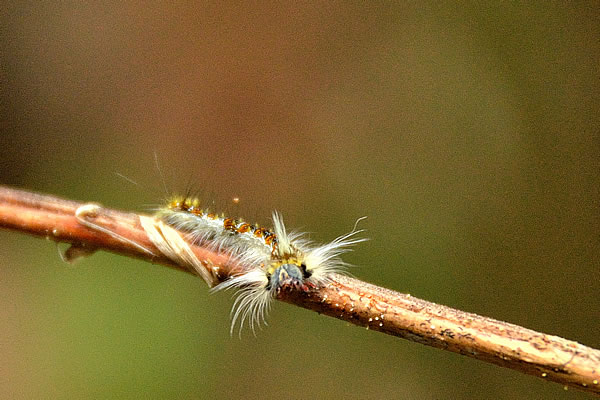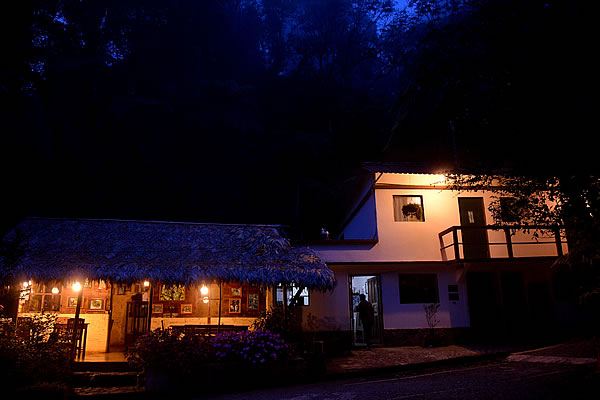English | Dutch |
|
| In search of the Quetzal | |
Coban (Guatemala), June 3rd 2017
|
|
| |
|
One of the most appealing birds you can see in Central America is the Quetzal. It is the national bird of Guatemala and its image can be found on the flag of the country and in its coat of arms. The Quetzal is by far the most beautiful species of the Trogon family. But as often with beautiful birds, they are hard to see in the wild. This is due, among other things, to the fact that the bird has now reached the near endangered status. This is mainly due to the loss of habitat by deforestation. Another reason why it is difficult to see the bird is the fact that the Quetzal lives in a very specific environment, namely in cloud forests at an altitude between 1300 and 3000 meters. The Quetzal is part of many pre-Columbian Mesoamerican legends, and this bird is especially strongly associated with Quetzalcoatl, the god of the wind in the Aztec culture, whose name means ‘feathered snake’ referring to the snake-like appearance when the bird flies between the trees with its immense long tail. There was even the death penalty for killing a Quetzal. Also with the Mayans, the Quetzal was highly regarded as a symbol of freedom, partly because the Quetzal always dies in captivity. However, this is no longer true. A zoo in Mexico has proven that it is possible to keep the bird alive in captivity, and that it is even possible to reproduce them. |
|
 |
|
The male Resplendent Quetzal flying (without long tail) |
|
Guatemala is a great place to have a good chance of seeing the Quetzal in its natural habitat; the Biotopo del Quetzal. This protected nature reserve is located between the cities of Guatemala City (3 hours’ drive away) and Coban (1 hour drive away). Along the main road (CA-14) that runs along the edge of the biotope, there are several accommodation options that can serve as a basis for the search of the Quetzal. The grounds of the hotels/resorts are often the best places to see this beautiful bird. We chose for the small and simple resort ‘Ranchitos del Quetzal’. And that was a perfect choice. It's a simple resort in the cloud forest with a good restaurant and a beautiful location. Ranchitos del Quetzal is located in its own nature reserve of over 30 hectares of cloud forest, with a few beautifully constructed hiking trails. But what we liked most about Ranchitos del Quetzal was that this low key resort is run by a group of local young enthusiasts who have the heart in the right place. The young owner Edna is now the third generation in her family who is compassionate about this beautiful place in Guatemala. She dropped a career in the West to follow the footsteps of her father and grandfather and to work with her heart and soul to maintain the Quetzal habitat. She has gathered a team of young people around herself with whom she is busy to study the Quetzal's living environment in a projective way, with the aim of improving the bird's future perspective. But not only the Quetzal has their interest; also the orchid gets special attention. It is also not so good with the orchids in Guatemala. Agricultural activities (especially insecticides and pesticides), as well as deforestation, also causes the future of the wild orchid to be at stake. Through research and teaching, the Ranchitos del Quetzal team also tries to turn the tide for the orchids. It was really a pleasure to spend some days with these people. | |
 |
|
Waiting for the Quetzals to arrive |
|
Our days at Ranchitos del Quetzal were the same almost every day. We wake up at five in the morning and then went immediately to the trumpet trees (Cecropia sp). The trumpet trees carried a lot of fruit which, according to the people of Ranchitos del Quetzal, was the best place to see them. Quetzals like the finger-like fruit of the Trumpet trees. And they were right, because every morning, just after sunset, we had good observations of both the female and male Quetzals. Since it was also breeding time, we initially saw only male Quetzals without the characteristic long tail. That's because male Quetzals who are bringing up young regularly have to wrap themselves and their long tail in the tree nest (hole in the tree abandoned by a woodpecker), often causing them to lose their long tail. The Quetzal itself is only about 35-40 centimetres, but the tail can be up to 100 centimetres long! But on the morning of the last day we were lucky; we saw a male in full glory. The hours of the day we were not looking for the beautiful Quetzal, we spent walking in the cloud forest, watching the beautiful orchids and chatting with the enthusiastic staff of Ranchitos del Quetzal. After three days it was time to say goodbye. We had a wonderful time and advise every visitor to Guatemala who has any interest in nature, or birds/orchids in particular, to visit this very special place. See our picture of our stay at Ranchitos del Quetzal here! Contact details: Ranchitos del Quetzal |
|
 |
|
The greenhouse with the orchids |
|
 |
|
The small laboratory of Ranchitos del Quetzal |
|
 |
|
The waterfall as the terminator of a hike at Ranchitos del Quetzal |
|
 |
|
A 'strange' creature in the cloud forest |
|
 |
|
The restaurant and reception of Ranchitos del Quetzal after sunset |
|